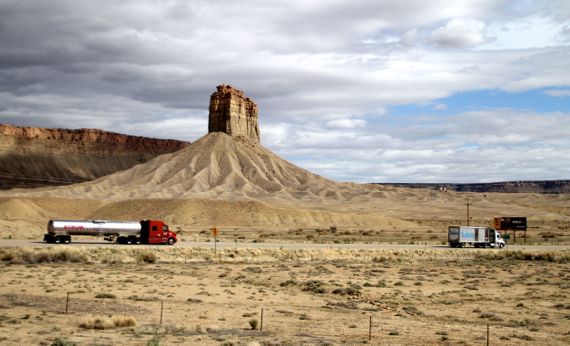Musings

I have forgotten the name of this shrub, but it’s happy in the flower bed I made years ago over the water oak stump left by the previous owners of this house. I put the bed there to speed the decomposition of the wood, but when I last checked a year or two ago, plenty of solid wood remains….
Posted at 10:22 PM |
Comments Off on Succession, human arranged

I swear I planted these tulips in November, or early December at the latest. They must be the slowest growing tulips ever.
My guess…tulips are highly sensitive to day-length….
Note the cute Delft bowl…this was a carefully imported plant-your-own kit. I’m looking forward to discovering the color of the blooms….
Posted at 10:22 PM |
Comments Off on Slow to grow
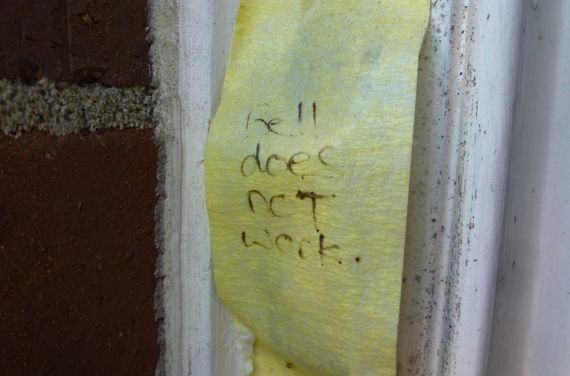
Coming home means rediscovering chores you forgot you left undone when you departed…although this one might wait a while longer….
Posted at 10:22 PM |
Comments Off on Bell, not hell
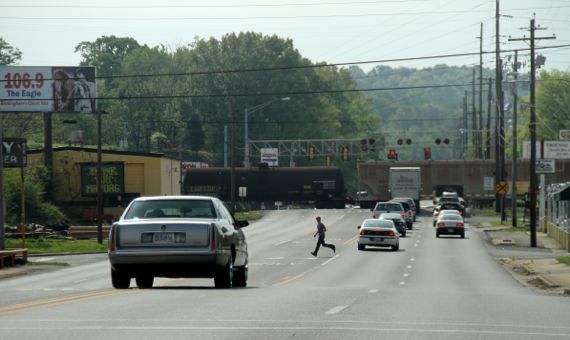
14th Street RR crossing, Bessemer, with Red Mountain in the background.
Bessemer, Alabama, may have been a mining and population center for decades, but now the resource is largely exhausted. As a bedroom community of Birmingham, there’s still plenty of traffic to get stopped by a passing cargo train.
Posted at 10:22 PM |
Comments Off on Ridge-and-valley (AL style)
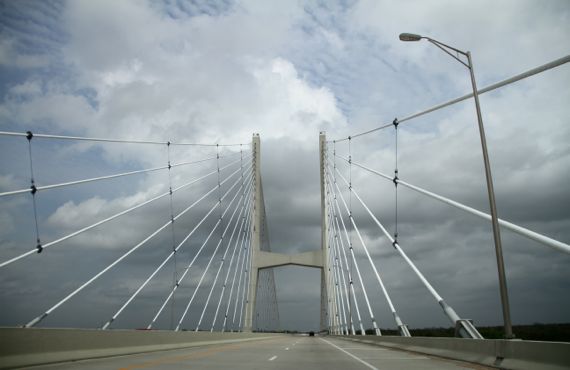
US 82 bridge across the Mississippi River, between Lake Village, Arkansas, and Greenville, Mississippi. Lake Village is built on the bank of a huge arc-lake that’s a cut-off bend of the river. This is the Miss Delta.
We motored east today. And motored some more.
The topic of discussion, introduced by The Guru, was: if you (however artificially) divide southern North America into east and west, where is the division? Based not on political boundaries, but on the landscape….
We both agreed we were “east” by the time we crossed the Mississippi. I argued that solo trees with the first branch high off the ground was a big part of that to me, so that when we left the scrub behind I became receptive to the “east” designation. (Skipping, of course, the big trees of the Far West….)
Posted at 10:22 PM |
Comments Off on What’s the speed limit?
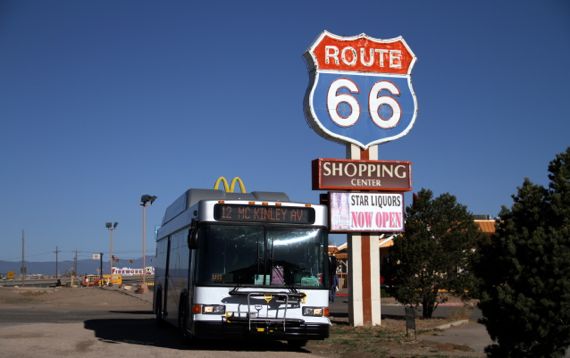
Nothing like making a typical post-coffee morning excursion off the limited-access in arid eastern New Mexico and finding a “Wha???”—in this case, a COTA bus, all shiny in the desert sun.
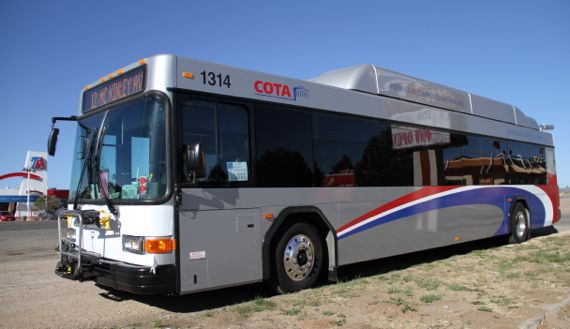
The C stands for Columbus. As in Ohio. The Guru spoke with the driver, who said it was a brand-new bus he was driving from the factory to its new home in Ohio.
Not a runaway….
Posted at 10:22 PM |
Comments Off on Data do not match

We had eight miles of unpaved road coming northeast out of Chaco. Actually, this well-dried zone was a preferred section. Most of the rest was so washboarded that we traveled at around 15 mph to avoid shaking the car to pieces. Had this been wet, um, no Prius clearance…. The wash we crossed yesterday that hosted a trickle was completely dry today. The state is suffering severe and extreme drought levels which benefitted us—the road, though rutted, was dry.
Back, before the ancient ones left, the tree rings show many consecutive years of extreme drought in the AD 1100s. By the end of that, people had left the mountains and canyons, migrating south to the river valleys, including that of the Rio Grande/Río Bravo.
* Kiva is a Hopi word referring to special-purpose round (and sometimes rectangular) rooms that has been adopted by Southwestern archaeologists to refer to semi-subterranean circular rooms of various sizes built for ritual purposes and sited, usually, in a plaza or amongst residential rooms. They characteristically have four support pillars, a firepit, an external air source, and the roof is often missing today, drastically changing the character of the space.
I am wondering if the fact that we had no kiva associated with our tent, as is true of the other campers and park residents, relates to the drought situation, hence the title….
Posted at 10:22 PM |
Comments Off on We had no kiva*

Perhaps THE coolest thing about camping out in a place like Chaco Canyon is the night sky. See the moon? (Duh.) See Orion to the left?
Stunning as the view was, we were even more aware of the wind. And the afternoon/overnight airflow was termed “breezy” here, and expected to become “windy” on Sunday.
Cleverly, I had brought canned turkey chili (thank you, TJs) that was edible cold, for our evening meal; I don’t have the stove skills to work around that much wind. One couple had nosed their pickup into the wind and had their stove fired up in the bed of the truck just under the back cover. The flame was still wild.
Posted at 10:22 PM |
Comments Off on Moon and Orion

This storage area, just below the ceiling at Cliff Palace, could only be reached through houses in half of the architectural complex. Thus, the contents were controlled/secret. Why? Because it mattered so very much….
At Mesa Verde, the Ancestral/Ancient Puebloan* peoples abandoned their mesa-top and cliff dwellings in the late 1200s long before the Spanish arrived. They were small-statured people, in the 5-2 to 5-4 range. I’m figuring a big part of that was restricted calories. Sure, a pound of piñon nuts is something like 5K calories, but the rest of the dietary assortment is pretty low fat and the carb loads had to be, um, light, everything considered (like the calories it would take to navigate up and down cliff-faces…).
Speaking of food management, we enjoyed a lovely organic Nero d’Avila from Sicily that we found at the Log Cabin liquor store in Mancos—a pleasant surprise.
* More PC to use Ancestral/Ancient Puebloan rather than Anasazi….
Posted at 10:22 PM |
1 Comment »
Please note: if you find yourself in Cortez, Colorado, at dinner time and your wallet is not entirely aplastado,* dine at The Farm Bistro right downtown and you will purr in happiness.
We even shared the restaurant with Osprey backpack folk, there for an employee banquet, and still were exceedingly happy, totally sated, and entirely pleased….
* Flattened/crushed, in Spanish. Also, here’s Osprey’s advice on how to pack your pack….
Posted at 9:42 PM |
Comments Off on Clouds may lead to rain, which for sure can lead to erosion










